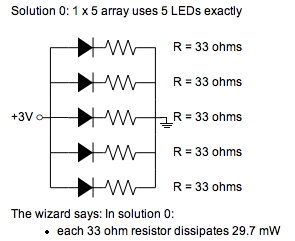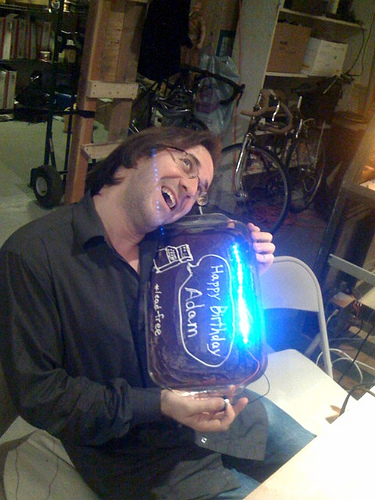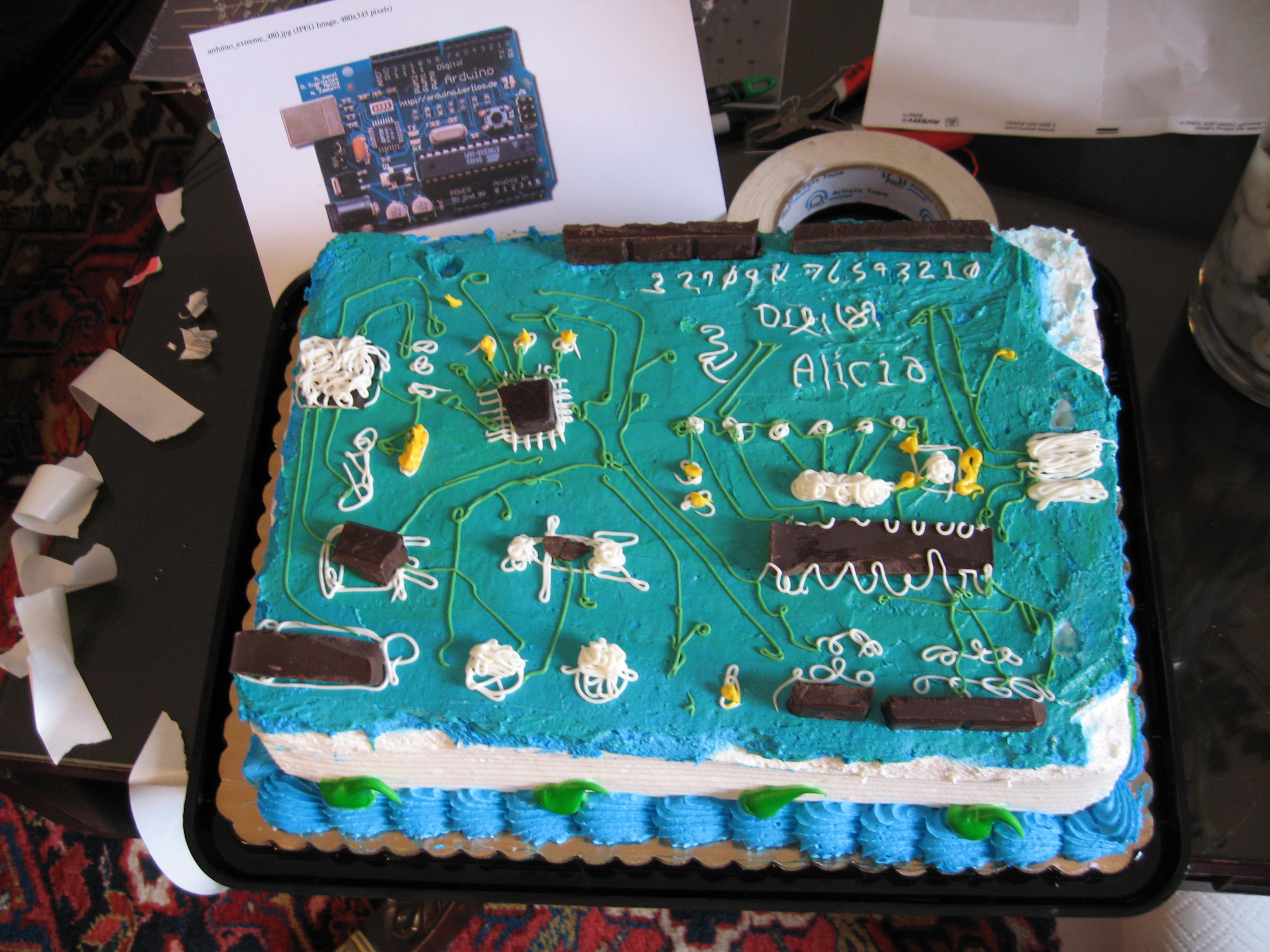In this video:
Alicia Gibb, with her Lego LED Matrix Chandelier. Read more in her full blog post
Video by: Eric Skiff (behind the camera / CC-BY music).
From Eric: While I’m here again, I figured I’d get in one more plug for the class I’m teaching on WordPress This Saturday at 4. Sign up here, and then don’t forget our rent/blinky things party later that same day! – Eric
Cake = Power
Chris Fenton’s DIY Laptop
In this video:
Chris Fenton, with his DIY Laptop.
Video by: Eric Skiff (behind the camera / CC-BY music).
From Eric: I’m teaching a class on “Building a website in 15 minutes with WordPress” This Saturday at 4. It’ll seriously change the way you build just about any site you work on – wordpress can be used for much more than just blogs! You can handle this class whether you’re a coder or not – you’ll be able to build a site with wordpress when we’re done. Sign up here. – Eric
The legoland matrix
This is a 256 LED matrix connected to Max7219 display drivers and programmed with an Arduino. Essentially, the Arduino is the brain behind the operation and the Max chip is the translator that speaks to the LEDs telling them when to turn on and off. The grid is separated into 8×8 quadrants and uses 4 Max7219 chips to drive a total of 16×16 rows and columns. The Arduino gives the Max7219 chip random numbers 0-8 to the digit and segment pins and lights up a single LED in its quadrant. By programming (with LOTS of help from Dino Dai Zovi) the display at 8000 one LED per grid lights up individually at a slow rate. Since computers don’t have opposable thumbs, this is where the human comes in. You get to put the legos where the computer instructs you to if you’re obedient. Once the computer has created its sculpture you can set the display to 3 or 4 and make it blink really fast turning it into a mesmerizing machine! Or a chandelier if you turn it upside down. You can also program patterns in the code rather than randomizing it, imitating lego instructions to build an object or map out visual data. The clear lego plates and bricks were found on ebay. The grid was built by Alicia Gibb and Becky Brauer. Look for upcoming LED Matrix building classes at NYCR.
NYCResistor LED Party
In this video: Devon Jones, with the Tinct. The Tinct project was started by Jonathan Guberman – you can read more here, here, here, and here.
The original Monome is at: http://monome.org/
The software is not up anywhere yet, but anyone who wants a copy, Devon is looking for collaborators. Let us know if the comments if you’d like to get involved!
Video by: Eric Skiff (behind the camera / CC-BY music).
Handy Dandy LED Resistor Calculator

Superbly handy LED circuit resistor calculator here. Put in your source voltage, forward diode voltage and forward current, get back a well-calculated wiring diagram. Woo! Arithmetic done by machines!
Simple Solutions with LEDs
Self-repairing modular robot
Check out this awesome modular robot! It even heals itself when kicked. Crazy!
A tasty piece of microcontroller
My friend Becky made me an Arduino birthday cake this year! There was a fight over the AVR chip (dark chocolate) which involved memory loss and a cake knife. Candles became wire sticking out of the pins. Seriously awesome. Next task: to make LED candles that you have to short out instead of blow out.




